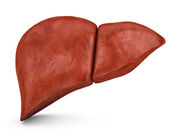Reduction in epicardial adipose tissue and liver fat content with exenatide versus reference treatment
MONDAY, May 2, 2016 (HealthDay News) — For patients with obesity and type 2 diabetes, exenatide reduces epicardial adipose tissue (EAT) and liver fat content, according to a study published online April 23 in Diabetes, Obesity and Metabolism.
Anne Dutour, M.D., Ph.D., from Inserm U1062 in Marseille, France, and colleagues randomized 44 obese patients with type 2 diabetes to receive 26 weeks of exenatide or reference treatment according to French guidelines. Forty-five minutes after a standardized meal, EAT, myocardial (MTGC), hepatic (HTGC), and pancreatic triglyceride (PTGC) content were assessed with 3-Tesla magnetic resonance imaging and 1H-magnetic resonance spectroscopy.
The researchers found that there were similar improvements in hemoglobin A1c with exenatide and reference treatment (P = 0.29). Significant weight loss was seen for exenatide only (P = 0.001 for the difference between groups). Significant reductions were seen in EAT and HTGC with exenatide versus the reference-treated group (P = 0.003 and P = 0.007, respectively). There were no significant differences in other ectopic fat stores, PTGC, or MTGC. Reductions in liver fat and EAT were not associated with homeostasis model assessment-insulin resistance, adiponectin, HbA1c, or fructosamin change in the exenatide group; they did correlate with weight loss (P = 0.03 and P = 0.018, respectively).
“Exenatide is an effective treatment to reduce liver fat content and epicardial fat in obese patients with type 2 diabetes, and these effects are mainly weight loss dependent,” the authors write.
Copyright © 2016 HealthDay. All rights reserved.








